Balkinization
an unanticipated consequence of
Jack M. Balkin
Balkinization Symposiums: A Continuing List
E-mail:
Jack Balkin:
jackbalkin at yahoo.com
Bruce Ackerman
bruce.ackerman at yale.edu
Ian Ayres
ian.ayres at yale.edu
Corey Brettschneider
corey_brettschneider at brown.edu
Mary Dudziak
mary.l.dudziak at emory.edu
Joey Fishkin
joey.fishkin at gmail.com
Heather Gerken heather.gerken at yale.edu
Abbe Gluck abbe.gluck at yale.edu
Mark Graber
mgraber at law.umaryland.edu
Stephen Griffin
sgriffin at tulane.edu
Jonathan Hafetz
jonathan.hafetz at shu.edu
Jeremy Kessler
jkessler at law.columbia.edu
Andrew Koppelman
akoppelman at law.northwestern.edu
Marty Lederman
msl46 at law.georgetown.edu
Sanford Levinson
slevinson at law.utexas.edu
David Luban
david.luban at gmail.com
Gerard Magliocca
gmaglioc at iupui.edu
Jason Mazzone
mazzonej at illinois.edu
Linda McClain
lmcclain at bu.edu
John Mikhail
mikhail at law.georgetown.edu
Frank Pasquale
pasquale.frank at gmail.com
Nate Persily
npersily at gmail.com
Michael Stokes Paulsen
michaelstokespaulsen at gmail.com
Deborah Pearlstein
dpearlst at yu.edu
Rick Pildes
rick.pildes at nyu.edu
David Pozen
dpozen at law.columbia.edu
Richard Primus
raprimus at umich.edu
K. Sabeel Rahmansabeel.rahman at brooklaw.edu
Alice Ristroph
alice.ristroph at shu.edu
Neil Siegel
siegel at law.duke.edu
David Super
david.super at law.georgetown.edu
Brian Tamanaha
btamanaha at wulaw.wustl.edu
Nelson Tebbe
nelson.tebbe at brooklaw.edu
Mark Tushnet
mtushnet at law.harvard.edu
Adam Winkler
winkler at ucla.edu
Compendium of posts on Hobby Lobby and related cases
The Anti-Torture Memos: Balkinization Posts on Torture, Interrogation, Detention, War Powers, and OLC
The Anti-Torture Memos (arranged by topic)
Recent Posts
Plus ça change
Just A Few Blogs
ACS Blog
Alas, a Blog
Althouse
Arts and Letters Daily
Atrios (Eschaton)
Bill of Health
Buzzflash.com
Buzz Machine
Cato at Liberty
Juan Cole (Informed Comment)
Concurring Opinions
The Constitution in 2020
Corrente
Crooked Timber
Daily Howler
Daily Kos
Dana Boyd
Brad DeLong
Digby (Hullabaloo)
Discriminations
Daniel Drezner
Kevin Drum (Mother Jones)
Electrolite
En Banc
Eunomia (Daniel Larison)
Fafblog
Michael Froomkin (Discourse.net)
GovLab (Beth Noveck)
Rick Hasen (Election Law)
History News Network
How Appealing
Ignatz (Sam Heldman)
The Importance of (Ernie Miller)
Infolaw
Instapundit
International Economic Law and Policy Blog
IntLawGrrls
Jacob Levy
Jesus' General
Jurisdynamics
The Kitchen Cabinet
Mark Kleiman
Law Blog Central
Larry Lessig
Lawyers, Guns and Money
Liberal Oasis
Brian Leiter's Law School Reports
The Leiter Reports
Marginal Revolution
Megan McArdle
Memeorandum
Metafilter
Mirror of Justice
The New Republic
Newseum
No More Mister Nice Blog
Brendan Nyhan
Opinio Juris
Orcinus
The Originalism Blog
Pandagon
Passport (Foreign Policy)
Overcoming Bias
Political Animal (Washington Monthly)
Political Theory Daily Review
Political Wire (Taegan Goddard)
The Poor Man
Virginia Postrel
Prawfsblawg
Public Reason
Jonathan Rauch
Raw Story
Redstate
ReligiousLeftLaw.com
Reporters Committee For Freedom of the Press
Reproductive Rights Blog
Rothman's Roadmap to the Right of Publicity
SCOTUS Blog
Seeing the Forest
Clay Shirky
The Shifted Librarian
The Situationist
Larry Solum (Legal Theory)
Andrew Sullivan
Talking Points Memo
Talk Left
Tapped
Tbogg
TechPresident
The Paper Chase (Jurist)
Tom Paine
Tom Tomorrow (This Modern World)
Eve Tushnet
Uggabugga
University of Chicago Law School Faculty Blog
Unqualified Offerings
The Volokh Conspiracy
War and Piece (Laura Rozen)
Wampum
Oliver Willis
Wonkette
Written Description
Matthew Yglesias
Yin
Your Choice of Feeds
1. XML
powered by
2. Atom Feed
3. RSS 2.0
Plus ça change
Guest Blogger
For the Balkinization Symposium on Rogers M. Smith and Desmond King, America’s New Racial Battle Lines: Protect versus Repair (University of Chicago Press, 2024). Corey Robin In
2010, Rogers Smith and Desmond King argue, America left behind the struggle
between conservative color-blindness and liberal race-consciousness that had dominated
race politics since the 1960s. Instead of color blindness and meritocracy, the
right now seeks to openly protect white, Christian men from liberalism and to
advance white Christian nationalism. Liberals no longer settle for
race-conscious policies, as they had since the 1960s. They have adopted a more
ambitious program of reparations. Both sides have mounted new alliances and
networks and pushed new tropes and ideas. Smith and King call the right’s
project Protect and the left’s project Repair. Both Protect and Repair have a
foothold in some part of the state, each seeking to impose a new policy regime
upon the rest of the state and society. My
first question is whether this battle between Protect and Repair constitutes a
new era in American racial politics. Like all historically minded scholars,
Smith and King are aware that any historical moment entails elements of continuity
and change (17, 20, 74). Even in an era of change, we should expect to find some
continuity. Yet the evidence of continuity that Smith and King do and do not
acknowledge makes me skeptical of their claim of a break. The
problem arises immediately with Smith and King’s distinction between a program
of protecting white victims and the pursuit of color-blindness. This
distinction lies at the heart of their claim for the rise of a new racial order
(4, 12, 31, 70, 75, 116). Since the 1960s, however, white victimhood has been
part of the grammar of color-blindness; it’s hard to conceive of a demand for
color-blindness, on the right, without an attendant complaint of white
grievance. Judge Robert Bork decried the “sacrifice” of white victims on the
altar of affirmative action. Justice Antonin Scalia had an even more specific
victim in mind: the “Polish factory worker’s kid.” Running for reelection
against Harvey Gant, the Black mayor of Charlotte, North Carolina, Republican
senator Jesse Helms turned the claim of white victimhood into one of the most
searing images (“the white hands”) of the age. Maybe the reason conservatives
tell Smith and King that their complaints date back to the 1960s—when, those
conservatives claim, the left gave up color-blindness for race-consciousness—is
that they are simply repeating the complaints of conservatives since the 1960s (98,
103, 135). Smith
and King might respond that the difference today is that the right actively
seeks to protect those putative white victims. Yet they also admit that color
blindness “worked to protect the advantages possessed by, especially,
more affluent whites” and that “protection was always the strongest
motive for [conservative] support of color-blind policies” (75; also see 70). What’s
changed then? Smith and King might say that color-blindness no longer works, as
policy, to protect the accumulated advantages of white Americans (though
resegregation and the increase in the racial wealth and income gaps, which
Smith and King acknowledge, suggest otherwise). If that is the claim, it would
be good to understand how and why color-blindness no longer works. Or
perhaps Smith and King would say that color-blindness no longer works politically
for the right, which is why affirmations of white protection have gone from dog
whistles to roaring cries (79). Yet the evidence they mention often points in
the opposite direction. Throughout their book, Smith and King cite multiple
incidents of conservatives’ repudiating affirmative statements of white
nationalism (80, 118, 120) or simply avoiding them: “Unsurprisingly,” they
write, “few [conservative] organizations announce their goals explicitly in
terms of protecting white Americans” (84). Why, if the era of dog whistles is
over, is that unsurprising? Given everything they say, what is surprising is
that of the six possible scenarios they envision at the end of their book, the
most likely one, they think, is the victory of a “multicultural protectionist
conservatism” (284), whose “core message” would be “a valorization of America’s
exceptional inclusiveness” (286). If that is the most likely scenario, how do
we square its likelihood with Smith and King’s claims for the collapse of
color-blindness and the rise of white protection? As
we move from words to deeds, the picture looks murkier. Smith and King cite
multiple pieces of evidence for the rise of a new Protect racial order. While
some of these pieces point to new developments, others signal continuity. Smith
and King cite, for example, the support for Trump from the KKK’s successors,
who claim that the “success of the Trump campaign proves that our views
resonate with millions” (113). In 1984, the KKK endorsed Reagan, claiming that the
GOP platform was “pure Klan” because it opposed busing and affirmative action.
Smith and King cite Trump’s first Attorney General Jeff Sessions’ history of
defending, as Alabama’s attorney general, de jure segregation in the state.
George W. Bush’s first attorney general, John Ashcroft, had an equally vicious
record as attorney general and governor of Missouri, leading one campaign after
another against desegregation. UCLA scholar Gary Orfield described Ashcroft as
the most intransigent of all the state officials he ever encountered in more
than thirty cases of federal litigation, while civil rights leader Ralph Neas
compared Ashcroft’s tactics to “the massive resistance employed by virulent
segregationists during the early days of the civil rights movement.” Perhaps
the main difference in their appointments is that eight Democrats voted for
Ashcroft while only one (Joe Manchin) voted for Sessions. Smith
and King do yeoman’s work in Table 5.1, which compiles all of “Trump’s Protect
Policies.” Yet not all the 61 items in the table are policies (some are
proposals). Nor can all of them be characterized as Protect (e.g., signing
Democratic legislation to reduce mass incarceration or increasing funding for
HBCUs). Some items on the table, moreover, were rebuffed by elements of the Protect
alliance. As Smith and King acknowledge (129; also see 116, 135-136), Trump
vetoed bipartisan legislation to rename military bases named for Confederate
leaders, but Congress overrode the veto. More remarkable is that 40 Senate and
109 House Republicans voted to override; only 7 GOP senators and 66
representatives supported Trump. Items on Table 5.1 are also consistent with the
pre-Protect policies of Bush (e.g., before Trump filed suit against Harvard’s
affirmative action policies, Bush filed suit against the University of Michigan’s;
before Trump opposed trans equality in the workplace, Bush opposed gay equality
in the workplace; Bush also privileged religious freedom over civil rights,
claiming that religious groups were most in need of civil rights protections). The
point is not that Smith and King fail to provide evidence for the rise of a
Protect order but that some of the evidence they cite (it’s difficult to assess
how much without a complete examination) points the other way. And while any
claim for historical change will come up against evidence of continuity, Smith
and King could be more assiduous in sifting through the evidence they do cite,
as well as that which they don’t, to help us assess their claim. Some part of
that sifting will raise the question of significance. It could be that the
countervailing evidence I’ve cited pales in comparison to Trump’s impact on
immigration, making a radically constricted immigration regime the “cornerstone”
of a new racial order, along the lines of 1924. But making such an argument
requires bracketing the many elements of the Protect alliance that are
continuous with the older conservative order. Bracketing may make for a smaller
body of evidence, but it’s critical to Smith and King’s case. My
second question concerns the “orderness” of this new Protect order. Smith and
King distinguish between policy alliances, policy regimes, and institutional
orders. While they insist that Protect is not simply a policy alliance or
regime but an institutional order, they acknowledge historical moments when
alliances are “too disempowered to be called ‘institutional orders,’ even
though some have succeeded in gaining control of governing institutions” (35). Are
we at such a moment? Two pieces of evidence suggest we may be. First,
as Smith and King argue, Trump has pursued the Protect agenda through his
appointment of officials and judges and executive orders (125). While judicial
appointments are for life, executive appointments and orders are temporary. Many
of Trump’s executive orders overturned Obama’s, while many of Trump’s have been
overturned by Biden. Executive orders and appointments are part of the
presidential repertoire of power, but it’s striking how much Trump had to rely
upon them, to the exclusion of legislation. Smith and King compare the politics
of racial contestation to a spiraling pendulum, where every few swings of
reform and reaction take place not “on the same horizontal plane” but on a new,
higher or lower, plane (8). That describes the transition from enslavement to
Jim Crow to the Civil Rights era. But so much of the contestation since 2016,
at least at the federal level, has involved a back-and-forth on the same plane
that it suggests less the move to a new order than stasis. Second,
despite the contestation, Smith and King rightly insist that in any racial
order we see “predominant patterns that have prevailed across many policy
regimes and in many sectors of social life” (277). A racial order does not
merely control a government institution; it “authoritatively order[s] citizens’
conduct” (8). If we take voting as one domain of the new Protect order, which
Smith and King do, we see a striking failure to prevail and order citizens’
conduct. Despite decades of Republican effort to restrict voting, voting rates in
2020 were the highest they’ve been in a century. Latino turnout rates were higher
than ever. Black turnout rates were higher than in any election other than when
Obama was on the ticket. This does not diminish the Right’s aim to restrict
voting. It suggests instead that critical elements of a new order—predominance,
prevailing, and controlling citizen conduct—are not yet present. If
this new Protect order is not quite an order, we’re faced with the question of
why. That leads to my last observation. The racial battles and orders of
American history that Smith and King cite—enslavement versus emancipation, de
jure segregation versus integration, de facto segregation and discrimination
versus race-consciousness—involved central questions of the economy. Every
battle broached critical issues of property and ownership, workplace control,
housing and schooling—not just in a few elite sectors or regions but across the
entire American economy. No question of race failed to touch the economy; every
cultural question was a material question. One
of Smith and King’s most fascinating findings is how small a role the economy
plays on both sides of the Protect/Repair divide. Corporations and rich people heavily
invest in both sides (30, 57, 257, 259). The most radical Repair proposals do
not address basic issues of distribution and ownership (60, 257). Whatever the right
may say about the left, Smith and King are careful to point out that conservatives
“who advance this story of how America has gone wrong do not see the Left as
currently prioritizing any deeply threatening economic agenda” (100). Seeing no
economic threat from the Left, seeing the racial wealth and income gaps and segregation
rates growing, the right can remain comfortably, if maniacally, focused on
“recapturing control of America’s cultural institutions” (100). While
cultural battles are critical, it may be that they don’t require, on either
side, new racial orders for their fighting. Existing languages, paradigms, and
alliances suffice. Without an economic or material challenge—along the lines of
the battle against slavery, de jure, and de facto segregation—the battle over
racial politics will continue to be fought, more or less, as it has been fought
for the last several decades. Corey
Robin (corey.robin@gmail.com) is
Distinguished Professor of Political Science at Brooklyn College and the CUNY
Graduate Center, and a proud former student of Rogers Smith.
Posted
9:30 AM
by Guest Blogger [link]
Books by Balkinization Bloggers

Linda C. McClain and Aziza Ahmed, The Routledge Companion to Gender and COVID-19 (Routledge, 2024)

David Pozen, The Constitution of the War on Drugs (Oxford University Press, 2024)

Jack M. Balkin, Memory and Authority: The Uses of History in Constitutional Interpretation (Yale University Press, 2024)
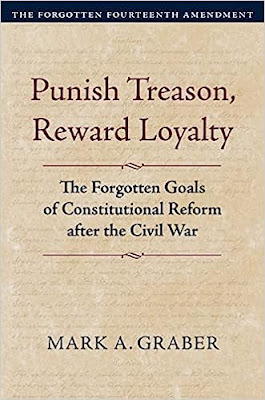
Mark A. Graber, Punish Treason, Reward Loyalty: The Forgotten Goals of Constitutional Reform after the Civil War (University of Kansas Press, 2023)
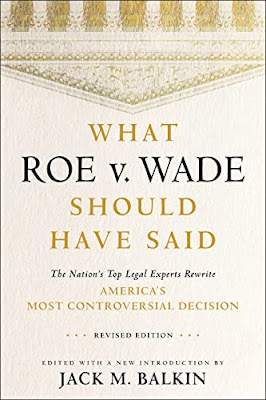
Jack M. Balkin, What Roe v. Wade Should Have Said: The Nation's Top Legal Experts Rewrite America's Most Controversial Decision - Revised Edition (NYU Press, 2023)

Andrew Koppelman, Burning Down the House: How Libertarian Philosophy Was Corrupted by Delusion and Greed (St. Martin’s Press, 2022)

Gerard N. Magliocca, Washington's Heir: The Life of Justice Bushrod Washington (Oxford University Press, 2022)
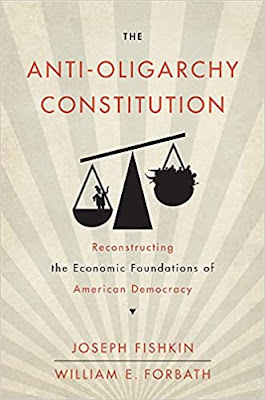
Joseph Fishkin and William E. Forbath, The Anti-Oligarchy Constitution: Reconstructing the Economic Foundations of American Democracy (Harvard University Press, 2022)

Mark Tushnet and Bojan Bugaric, Power to the People: Constitutionalism in the Age of Populism (Oxford University Press 2021).

Mark Philip Bradley and Mary L. Dudziak, eds., Making the Forever War: Marilyn B. Young on the Culture and Politics of American Militarism Culture and Politics in the Cold War and Beyond (University of Massachusetts Press, 2021).

Jack M. Balkin, What Obergefell v. Hodges Should Have Said: The Nation's Top Legal Experts Rewrite America's Same-Sex Marriage Decision (Yale University Press, 2020)

Frank Pasquale, New Laws of Robotics: Defending Human Expertise in the Age of AI (Belknap Press, 2020)

Jack M. Balkin, The Cycles of Constitutional Time (Oxford University Press, 2020)

Mark Tushnet, Taking Back the Constitution: Activist Judges and the Next Age of American Law (Yale University Press 2020).

Andrew Koppelman, Gay Rights vs. Religious Liberty?: The Unnecessary Conflict (Oxford University Press, 2020)

Ezekiel J Emanuel and Abbe R. Gluck, The Trillion Dollar Revolution: How the Affordable Care Act Transformed Politics, Law, and Health Care in America (PublicAffairs, 2020)

Linda C. McClain, Who's the Bigot?: Learning from Conflicts over Marriage and Civil Rights Law (Oxford University Press, 2020)
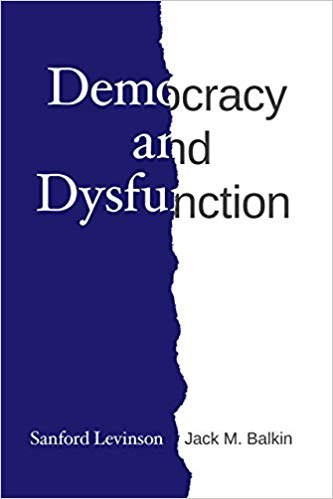
Sanford Levinson and Jack M. Balkin, Democracy and Dysfunction (University of Chicago Press, 2019)

Sanford Levinson, Written in Stone: Public Monuments in Changing Societies (Duke University Press 2018)

Mark A. Graber, Sanford Levinson, and Mark Tushnet, eds., Constitutional Democracy in Crisis? (Oxford University Press 2018)

Gerard Magliocca, The Heart of the Constitution: How the Bill of Rights became the Bill of Rights (Oxford University Press, 2018)

Cynthia Levinson and Sanford Levinson, Fault Lines in the Constitution: The Framers, Their Fights, and the Flaws that Affect Us Today (Peachtree Publishers, 2017)

Brian Z. Tamanaha, A Realistic Theory of Law (Cambridge University Press 2017)

Sanford Levinson, Nullification and Secession in Modern Constitutional Thought (University Press of Kansas 2016)

Sanford Levinson, An Argument Open to All: Reading The Federalist in the 21st Century (Yale University Press 2015)

Stephen M. Griffin, Broken Trust: Dysfunctional Government and Constitutional Reform (University Press of Kansas, 2015)

Frank Pasquale, The Black Box Society: The Secret Algorithms That Control Money and Information (Harvard University Press, 2015)

Bruce Ackerman, We the People, Volume 3: The Civil Rights Revolution (Harvard University Press, 2014)
Balkinization Symposium on We the People, Volume 3: The Civil Rights Revolution

Joseph Fishkin, Bottlenecks: A New Theory of Equal Opportunity (Oxford University Press, 2014)

Mark A. Graber, A New Introduction to American Constitutionalism (Oxford University Press, 2013)

John Mikhail, Elements of Moral Cognition: Rawls' Linguistic Analogy and the Cognitive Science of Moral and Legal Judgment (Cambridge University Press, 2013)

Gerard N. Magliocca, American Founding Son: John Bingham and the Invention of the Fourteenth Amendment (New York University Press, 2013)

Stephen M. Griffin, Long Wars and the Constitution (Harvard University Press, 2013)

Andrew Koppelman, The Tough Luck Constitution and the Assault on Health Care Reform (Oxford University Press, 2013)

James E. Fleming and Linda C. McClain, Ordered Liberty: Rights, Responsibilities, and Virtues (Harvard University Press, 2013)
Balkinization Symposium on Ordered Liberty: Rights, Responsibilities, and Virtues

Andrew Koppelman, Defending American Religious Neutrality (Harvard University Press, 2013)

Brian Z. Tamanaha, Failing Law Schools (University of Chicago Press, 2012)

Sanford Levinson, Framed: America's 51 Constitutions and the Crisis of Governance (Oxford University Press, 2012)

Linda C. McClain and Joanna L. Grossman, Gender Equality: Dimensions of Women's Equal Citizenship (Cambridge University Press, 2012)

Mary Dudziak, War Time: An Idea, Its History, Its Consequences (Oxford University Press, 2012)

Jack M. Balkin, Living Originalism (Harvard University Press, 2011)

Jason Mazzone, Copyfraud and Other Abuses of Intellectual Property Law (Stanford University Press, 2011)

Richard W. Garnett and Andrew Koppelman, First Amendment Stories, (Foundation Press 2011)

Jack M. Balkin, Constitutional Redemption: Political Faith in an Unjust World (Harvard University Press, 2011)

Gerard Magliocca, The Tragedy of William Jennings Bryan: Constitutional Law and the Politics of Backlash (Yale University Press, 2011)

Bernard Harcourt, The Illusion of Free Markets: Punishment and the Myth of Natural Order (Harvard University Press, 2010)

Bruce Ackerman, The Decline and Fall of the American Republic (Harvard University Press, 2010)
Balkinization Symposium on The Decline and Fall of the American Republic

Ian Ayres. Carrots and Sticks: Unlock the Power of Incentives to Get Things Done (Bantam Books, 2010)

Mark Tushnet, Why the Constitution Matters (Yale University Press 2010)
Ian Ayres and Barry Nalebuff: Lifecycle Investing: A New, Safe, and Audacious Way to Improve the Performance of Your Retirement Portfolio (Basic Books, 2010)
.jpg)
Jack M. Balkin, The Laws of Change: I Ching and the Philosophy of Life (2d Edition, Sybil Creek Press 2009)

Brian Z. Tamanaha, Beyond the Formalist-Realist Divide: The Role of Politics in Judging (Princeton University Press 2009)
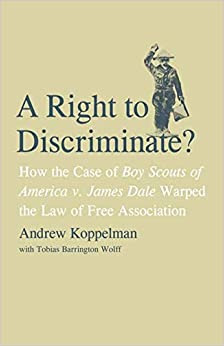
Andrew Koppelman and Tobias Barrington Wolff, A Right to Discriminate?: How the Case of Boy Scouts of America v. James Dale Warped the Law of Free Association (Yale University Press 2009)

Jack M. Balkin and Reva B. Siegel, The Constitution in 2020 (Oxford University Press 2009)
Heather K. Gerken, The Democracy Index: Why Our Election System Is Failing and How to Fix It (Princeton University Press 2009)

Mary Dudziak, Exporting American Dreams: Thurgood Marshall's African Journey (Oxford University Press 2008)

David Luban, Legal Ethics and Human Dignity (Cambridge Univ. Press 2007)

Ian Ayres, Super Crunchers: Why Thinking-By-Numbers is the New Way to be Smart (Bantam 2007)

Jack M. Balkin, James Grimmelmann, Eddan Katz, Nimrod Kozlovski, Shlomit Wagman and Tal Zarsky, eds., Cybercrime: Digital Cops in a Networked Environment (N.Y.U. Press 2007)

Jack M. Balkin and Beth Simone Noveck, The State of Play: Law, Games, and Virtual Worlds (N.Y.U. Press 2006)

Andrew Koppelman, Same Sex, Different States: When Same-Sex Marriages Cross State Lines (Yale University Press 2006)
Brian Tamanaha, Law as a Means to an End (Cambridge University Press 2006)
Sanford Levinson, Our Undemocratic Constitution (Oxford University Press 2006)
Mark Graber, Dred Scott and the Problem of Constitutional Evil (Cambridge University Press 2006)
Jack M. Balkin, ed., What Roe v. Wade Should Have Said (N.Y.U. Press 2005)
Sanford Levinson, ed., Torture: A Collection (Oxford University Press 2004)
Balkin.com homepage
Bibliography
Conlaw.net
Cultural Software
Writings
Opeds
The Information Society Project
BrownvBoard.com
Useful Links
Syllabi and Exams